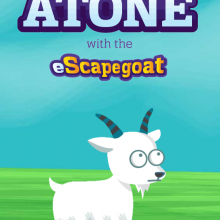yom kippur
There is no guarantee of divine reward for our goodness, nor threat of eternal punishment for our misdeeds. And yet, we are instructed each year, to stop the busyness of our lives, contemplate our own mortality, and make concrete changes based on our conclusions. One might wonder, why bother?
Happy 5775! At sundown on Sept. 24, Jews around the world will turn the page on the Jewish calendar to begin the new year, Rosh Hashanah. What starts with a feast at home will end 10 days later with a fast in the synagogue on Yom Kippur, the Day of Atonement. This time is referred to as “The Days of Awe” as Jews move between repentance and forgiveness, reflection and renewal.
Here’s everything goyim need to know about the High Holy Days so they can holler “L’shanah tovah!” — or “Happy New Year!” — without looking like a shmendrick.
Q: What do Jews celebrate on Rosh Hashanah and Yom Kippur?
A: The new year is celebrated with family and friends, but Jews are also expected to think about the meaning and direction of their lives. How could they have been better Jews? Better human beings? That comes full circle on Yom Kippur, when Jews fast for a whole day and reflect on their faults and the ways they have wronged people throughout the year. It is a holiday for making amends, for seeking and giving forgiveness.
Q: Well, ain’t that a party? Sign me up. KIDDING!
In the midst of the Jewish holiday season, more than 1,200 rabbis and cantors have urged Congress to pass comprehensive immigration reform.
“We thought it was a particularly good time to speak out as rabbis and cantors on this issue that really speaks to us as Americans and as Jews,” said Barbara Weinstein, associate director of the Religious Action Center of Reform Judaism, the Reform movement’s Washington office that coordinated the effort.
“For centuries, Jews were guests in others’ lands and not always treated well.”
The weeks leading up to the Jewish High Holy Days are supposed to be marked by self-questioning: What failings must I atone for, and to whom must I apologize?
A group of artists, writers and animators are hoping a cartoon goat may help.
They call it the eScapegoat, and it’s supposed to approximate the original scapegoat, described in Leviticus as an important player in the atonement ritual of the ancient Israelites, who symbolically placed their sins upon the animal and sent it into the wilderness.
One of the central teachings of Torah is that all human beings are made in the Image of God. That teaching and what flows from it are at the heart of Jewish prohibitions on the use of torture -- and perhaps at the heart of Christian opposition to torture as well.
Indeed, the Rabbis



